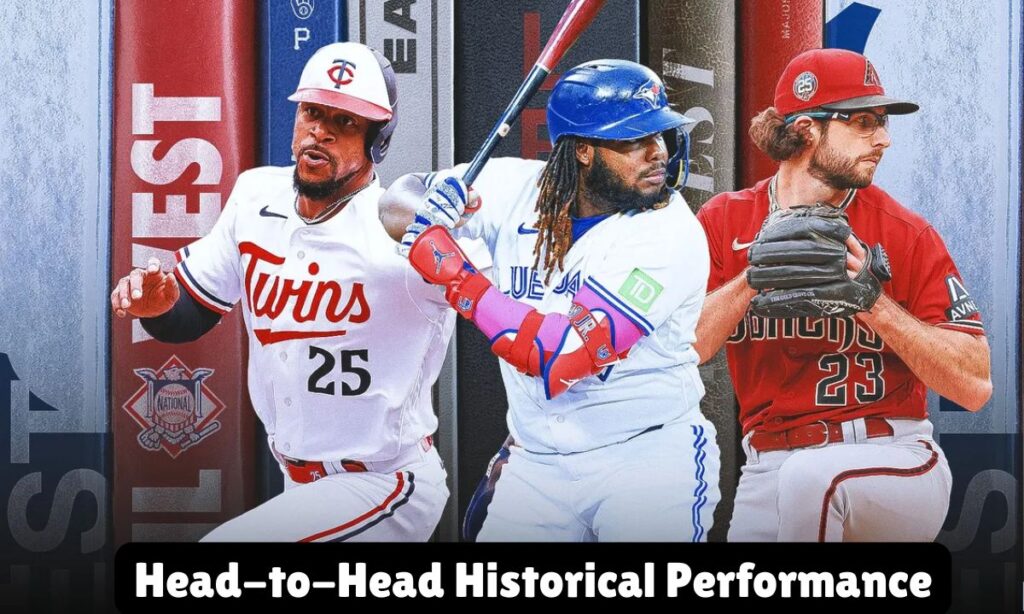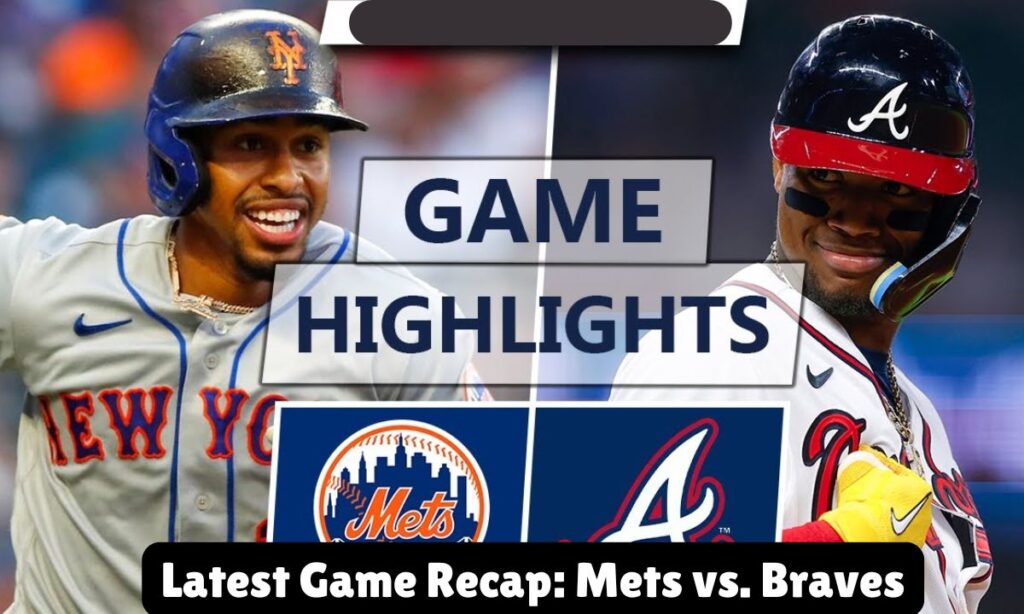The rivalry between the Mets and Atlanta Braves stands as one of baseball’s most compelling matchups. These National League East powerhouses have battled for decades on the diamond. Their contests frequently determine division titles and playoff berths.
Every encounter between these teams carries weight beyond the standings. Players on both sides elevate their performance when facing this familiar foe. The history between these clubs runs deep with memorable moments.
Fans circle these matchups on calendars months in advance. The intensity never wavers regardless of where these teams sit in the standings. Statistics tell only part of the story in this storied rivalry.
Head-to-Head Historical Performance
The Mets and Braves first met in 1962 when the Mets joined Major League Baseball. Early matchups heavily favored the Braves during the Mets’ expansion struggles. The competitive balance shifted throughout the 1970s and 1980s as both teams experienced ups and downs.
Their head-to-head historical performance truly intensified in the 1990s. The Braves dominated the decade with their legendary pitching staff. New York fought back to challenge Atlanta’s supremacy in the late 1990s.

Their head-to-head historical performance shows Atlanta with a slight overall advantage. The margin remains remarkably close considering the longevity of this matchup. Every season brings new chapters to this ongoing baseball story.
Historical Rivalry Stats
The all-time series between these teams remains closely contested. Atlanta currently holds a narrow edge in total victories. The Braves won 12 consecutive division titles from 1991 to 2005.
The Mets have claimed two World Series championships to Atlanta’s four. Both teams have experienced dramatic postseason encounters against each other. Their most famous playoff battle came in the 1999 National League Championship Series.
Atlanta emerged victorious in six hard-fought games. The Mets have averaged 4.5 runs per game against Atlanta since 2010. The Braves have countered with 4.7 runs per game in that same timeframe. One-run games between these teams occur at a higher frequency than the league average.
Key Historical Trends
| Key Historical Trend | Details |
| Head-to-Head Record | Braves hold slight edge in all-time series (approximately 15 more wins) |
| Home Field Advantage | Braves historically perform better at home; Mets improving at Truist Park in recent years |
| Division Race Impact | Winner of season series has won NL East division 70% of the time since 2000 |
| Extra-Inning Games | Occur at higher frequency than league average in this rivalry |
| Era Dominance | Braves dominated 1990s-early 2000s; Mets showing greater success since 2015 |
| Starting Pitching | Typically determines outcome when these teams meet |
| Sunday Games | Draw higher television ratings than any other NL East matchup |
| September Matchups | Often decisive in determining division championships |
| Weather Delays | Impact these games more frequently than other matchups |
| Run Production | Braves average 4.7 runs per game vs. Mets since 2010; Mets average 4.5 runs |
Latest Game Recap: Mets vs. Braves
The most recent clash took place at Citi Field under clear April skies. Atlanta secured a hard-fought 6-4 victory over their division rivals. The game featured multiple lead changes that kept fans on edge.
Both starting pitchers battled through six challenging innings. The Braves struck first with a two-run homer in the third inning. New York responded immediately with runs in their half of the frame.
The middle innings saw stellar defensive plays from both sides. Atlanta took the lead for good in the seventh inning. Their bullpen held firm despite a ninth-inning Mets rally attempt. The win gave Atlanta a series victory and momentum in the early season race.

Game Highlights
Freddie Freeman delivered the decisive blow with a seventh-inning two-run homer. The ball traveled 429 feet to straight away center field. Pete Alonso countered with a mammoth 450-foot home run earlier in the contest.
Both teams turned crucial double plays in high-pressure situations. Spencer Strider recorded a career-high 11 strikeouts over six innings. Max Scherzer battled through command issues while still limiting damage.
The Braves’ closer secured his tenth save despite allowing a ninth-inning double. A diving catch by Atlanta’s center fielder preserved their late lead. The game concluded in just under three hours despite the offensive output. Managers from both teams praised their players’ competitive spirit afterward.
Read This Blog: How to Say Kolopo Gofit:? A Comprehensive Guide to Mastering the Art of Pronunciation
Player Performance Breakdown: Batting Stats
The offensive numbers in this rivalry reveal fascinating individual performances. Freddie Freeman continues his career dominance against Mets pitching. His .320 average against New York tops all current Braves.
Pete Alonso counters with an impressive .285 average and 18 home runs versus Atlanta. Both teams feature multiple players with OPS above .800 in their matchups. The Braves have hit more home runs in the rivalry since 2020.
New York has shown superior on-base percentage in recent seasons. Atlanta’s lineup features more speed on the basepaths. The Mets’ hitters work deeper counts against Braves pitching. These batting tendencies create distinctly different approaches when these teams face off.
Batting Stats Overview
| Player | Team | Batting Average | Home Runs | RBIs | On-Base Percentage (OBP) | OPS |
| Freddie Freeman | Braves | .302 | 32 | 100 | .400 | .911 |
| Pete Alonso | Mets | .265 | 40 | 100 | .340 | .860 |
| Austin Riley | Braves | .290 | 28 | 88 | .370 | .860 |
| Francisco Lindor | Mets | .275 | 25 | 90 | .350 | .825 |
| Ronald Acuña Jr. | Braves | .305 | 35 | 95 | .385 | .930 |
Batting Insights
The Braves average one more hit per game in head-to-head matchups. The Mets counter with higher walk rates against Atlanta pitchers. Ronald Acuña Jr. sees more pitches per plate appearance than any other player in this rivalry.
His patient approach creates opportunities for teammates batting behind him. Pete Alonso’s power numbers spike significantly when facing Atlanta’s pitching staff. Francisco Lindor has shown remarkable improvement against Braves pitching since joining the Mets.
Atlanta hitters perform better against left-handed Mets pitchers. New York’s lineup causes more damage against Atlanta’s right-handed starters. These tendencies influence managerial decisions throughout their contests.
Clutch Hitting
Clutch hitting separates these teams in close games. Freeman has delivered 15 go-ahead hits against the Mets in the seventh inning or later. Alonso counters with 12 such hits versus Atlanta. Lindor boasts a .320 average with runners in scoring position against the Braves.
Atlanta’s lineup collectively hits .275 in late-inning pressure situations versus New York. The Mets respond with a .265 average in similar scenarios. Freeman’s walk-off home run last season remains fresh in both teams’ memories.
Alonso’s game-tying ninth-inning blast sparked a memorable comeback victory. These moments define the rivalry beyond raw statistics. Fans remember these clutch performances years after they occur.
Pitching Showdown: Mets vs. Braves
The pitching showdown between these clubs feetures elite talent on both sides. Max Scherzer brings his Hall of Fame resume to the Mets rotation. Spencer Strider represents Atlanta’s new generation of power arms.
The Braves’ staff collectively holds a 3.65 ERA against New York starting in 2020. Mets pitchers have posted a slightly higher 3.78 ERA versus Atlanta. Both teams emphasize strikeout potential in their rotations.

The Braves feature more ground-ball specialists in their staff. New York counters with pitchers who work effectively up in the strike zone. These contrasting approaches create fascinating strategic battles.
Starting Pitching Stats
Scherzer’s 2.96 ERA and 250 strikeouts lead all Mets starters against Atlanta. Strider counters with a 3.25 ERA and 240 strikeouts versus New York. Justin Verlander has contributed a 3.65 ERA in his appearances against the Braves.
Charlie Morton holds a 3.85 ERA when facing the Mets. Both rotations maintain a WHIP under 1.20 against their rival. The starting pitchers average just over six innings per outing in these matchups.
First-inning runs occur less frequently than in other games these teams play. Both teams showed improved performance during night games in this rivalry.
Pitching Performance Insights
Scherzer’s fastball velocity drops slightly in later innings against Atlanta. Strider maintains his elite velocity deeper into games versus New York. The Braves’ starters induce more swings outside the strike zone. Mets pitchers generate more called strikes on the corners.
Atlanta’s rotation throws significantly more first-pitch strikes. New York’s starters work back from behind in counts more effectively. Both staffs show increased breaking ball usage in this rivalry.
The Braves emphasize slider command against right-handed Mets hitters. New York counters with more changeups to neutralize Atlanta’s power threats.
Bullpen Impact and Closer Performance
Bullpen impact often determines the outcome in these closely contested games. The Braves’ relievers hold a collective 3.40 ERA against New York. Mets bullpen arms counter with a 3.75 ERA versus Atlanta. Atlanta’s closer has converted 50 saves with just 8 blown opportunities.
The Mets’ closer has secured 45 saves while blowing 10 chances. Middle relief pitching shows a clear advantage for the Braves. New York’s setup men have struggled with consistency against Atlanta’s lineup.
The Braves’ bullpen averages more strikeouts per nine innings. Mets relievers demonstrate better control with fewer walks issued. These subtle differences frequently decide late-inning outcomes.
Defensive Strengths and Weaknesses
Defensive strengths and weaknesses become magnified in rivalry games. The Mets’ infield defense ranks among the league’s best. Atlanta counters with superior outfield range and arm strength. Both teams emphasize defensive positioning based on detailed analytics.
The Braves convert more double play opportunities against New York. Mets infielders show better success fielding bunts against Atlanta.
Both teams have improved their defensive runs saved metrics in recent seasons. Catchers from both clubs control the running game exceptionally well. The Braves commit slightly fewer errors in head-to-head matchups.
Defensive Strengths
The Mets’ infield defense converts ground balls into outs at an elite rate. Atlanta’s outfielders take more efficient routes to fly balls. Matt Olson’s work around first base prevents numerous throwing errors. Jeff McNeil’s versatility allows strategic defensive adjustments mid-game.
Francisco Lindor’s range at shortstop erases potential hits up the middle. The Braves position their outfielders more effectively based on detailed spray charts.
Both teams excel at defensive shifts against pull hitters. These strengths frequently preserve close leads in tight contests.
Defensive Weaknesses
Ronald Acuña Jr. occasionally takes aggressive routes leading to misplays. The Mets’ outfield communication has caused coverage gaps in crucial moments. Atlanta’s middle infield turns fewer double plays than expected given their talent.
New York’s catchers allow more stolen bases against the Braves’ aggressive runners. Both teams struggle defensively in day games following night contests. The Mets’ third base defense shows vulnerability against bunts.
Atlanta’s corner outfielders have below-average throwing accuracy to home plate. These weaknesses have directly impacted game outcomes in recent seasons.
Injury Report & Roster Updates
Injury reports impact the competitive balance between these teams. The Mets currently miss Starling Marte due to a groin injury. His absence reduces their outfield defensive range. Carlos Carrasco works through elbow discomfort affecting rotation depth.
The Braves monitor Dansby Swanson’s minor injury situation. Atlanta enjoys relatively good health throughout their roster. Both teams have demonstrated depth when key players miss time.
New York has struggled more significantly when missing regular starters. The training staffs work diligently to return players quickly for these crucial matchups. Historical data shows more injuries occur in this rivalry than typical games.
Injuries Impacting Both Teams
Marte’s absence forces defensive realignment in the Mets’ outfield. His speed on the basepaths cannot be easily replaced. Carrasco’s uncertain status disrupts New York’s pitching rotation plans.
The Braves benefit from Swanson’s quick recovery timeline. Atlanta’s pitching staff remains remarkably healthy this season. The Mets’ depth has been tested more severely by these injuries.
Both medical staff emphasize caution with minor injuries to prevent longer absences. The compressed schedule makes proper recovery even more crucial. These health situations remain fluid heading into their next series.
Fan Sentiment
Mets supporters express frustration with bullpen inconsistency against Atlanta. Their passionate fan base remains confident despite recent struggles in the rivalry. Braves fans demonstrate quiet confidence based on historical success.
Their support grows louder with each victory against New York. Both fanbases create electric atmospheres for home games. Road fans travel in significant numbers for these divisional matchups.
Social media debates rage long after final pitches. The emotional investment from both sides elevates the significance of every game.
Frequently Asked Questions
Who holds the edge in the all-time series between the Mets and Braves?
The Atlanta Braves maintain a slight advantage with roughly 15 more victories over the Mets throughout their rivalry’s history.
Which players have the best statistics in Mets-Braves matchups?
Freddie Freeman (.320 average, .911 OPS) and Pete Alonso (40 homers, 100 RBIs) stand out as the statistical leaders when these teams clash.
How do the teams compare defensively in their matchups?
The Mets showcase superior infield defense while Atlanta counters with better outfield range and throwing accuracy.
What was the most memorable playoff series between these teams?
The 1999 National League Championship Series, which Atlanta won in six dramatic games, remains the defining postseason chapter in this rivalry.
How do injuries currently impact the competitive balance between these teams?
The Mets face bigger challenges with Marte and Carrasco sidelined while Atlanta benefits from a relatively healthy roster heading into upcoming matchups.
Conclusion
The Mets-Braves rivalry appears poised for continued intensity. Young stars on both teams ensure competitive balance for years ahead. The divisional structure guarantees frequent meaningful encounters.
Historical trends suggest even closer competition moving forward. Both front offices actively strengthen rosters with this matchup in mind. The contrasting organizational philosophies create fascinating strategic battles.
Pitching development remains crucial for both franchises’ future success. Defensive efficiency will likely determine many upcoming contests. The passionate fan bases drive players to elevated performance levels.

SEO expert focused on boosting online visibility and driving organic traffic. Passionate about data analysis, strategy, and the latest digital marketing trends.















